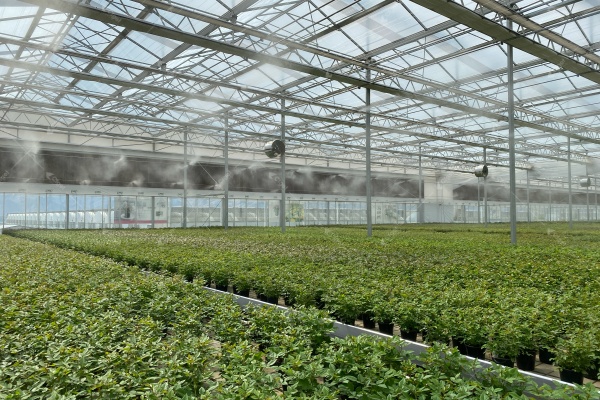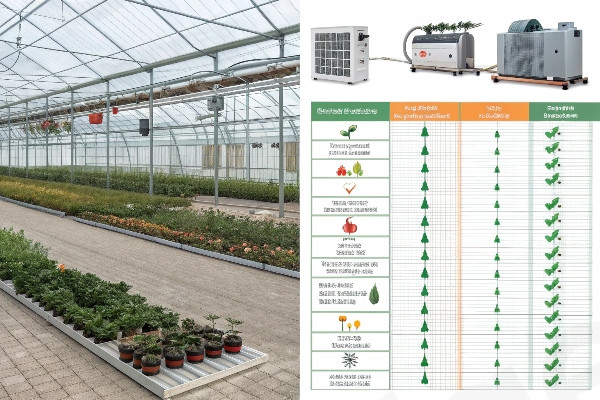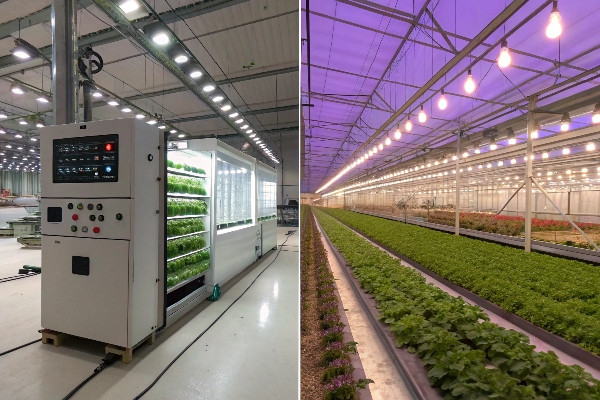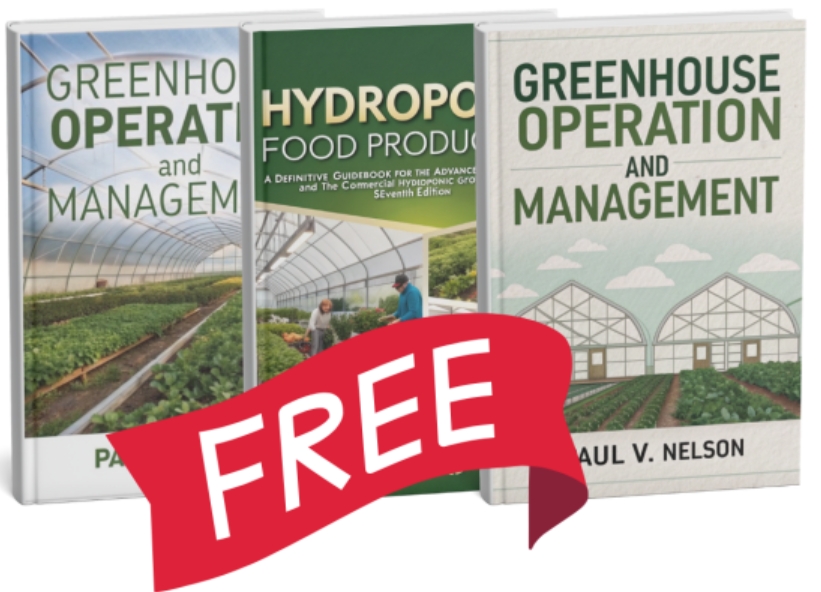Choosing wrong covering materials destroys crop yields and wastes investment. Polycarbonate and glass each offer distinct advantages for different applications. Smart selection depends on climate, crops, and budget considerations.
Polycarbonate panels cost 40-60% less than glass while providing superior insulation and impact resistance, making them ideal for most commercial applications, but glass delivers 8-10% higher light transmission and 10-15 year longer lifespan for premium crop production requiring maximum light quality.

Material choice significantly impacts performance, costs, and crop outcomes.
After installing thousands of commercial greenhouses across different climates and crop applications, I have learned that neither material is universally superior. The choice depends entirely on your specific growing requirements, local climate conditions, and economic objectives. Understanding each material’s strengths and weaknesses guides optimal selection for your operation.
What are the advantages of polycarbonate? (Lightweight, impact-resistant, good insulation)?
Polycarbonate panels solve many problems that plague glass-covered greenhouses. Weight reduction simplifies construction while impact resistance prevents costly breakage. Superior insulation properties reduce energy costs significantly in most climates.
Twin-wall polycarbonate panels weigh 85% less than equivalent glass while providing 150% better insulation value, reducing structural support requirements by 40% and heating costs by 25-35% in cold climate applications.
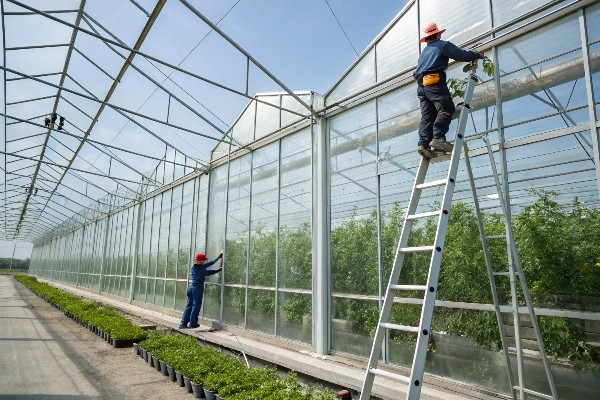
Cellular structure provides multiple performance benefits over solid materials.
The lightweight nature of polycarbonate panels transforms greenhouse construction economics. Standard 16mm twin-wall panels weigh only 2.5 kg per square meter compared to 12-15 kg for equivalent glass. This weight reduction allows lighter structural frameworks that cost 30-40% less than glass-supporting systems.
Installation becomes faster and safer with polycarbonate materials. Workers can handle large panels without heavy lifting equipment. This reduces construction time by 20-30% and eliminates crane rental costs for most projects. Safety improves dramatically since dropped panels rarely cause injury or property damage.
Impact resistance represents polycarbonate’s greatest advantage over glass. These panels withstand hail impacts up to 25mm diameter without damage. Wind-blown debris that shatters glass simply bounces off polycarbonate surfaces. This durability proves critical in storm-prone regions where glass replacement costs can bankrupt operations.
The cellular structure of twin-wall and triple-wall panels creates excellent thermal insulation. Air gaps between panel walls act as thermal barriers that reduce heat transfer. Twin-wall panels provide R-2.5 insulation value compared to R-1.0 for single-pane glass.
This improved insulation translates directly into energy savings. Heating costs drop 25-35% in cold climates when switching from glass to polycarbonate. Cooling costs also decrease in hot regions since less heat penetrates the structure during summer months.
Light diffusion properties benefit many crop applications. The cellular structure scatters direct sunlight, creating more uniform light distribution throughout the growing area. This diffused light reduces hot spots and leaf burn while improving photosynthesis in lower plant canopies.
| Polycarbonate Advantage | Performance Metric | Cost Impact | Best Application |
|---|---|---|---|
| Lightweight | 85% weight reduction | 30-40% lower structure cost | All climates |
| Impact Resistance | 250x stronger than glass | Eliminates replacement costs | Storm-prone areas |
| Insulation | R-2.5 vs R-1.0 glass | 25-35% heating savings | Cold climates |
| Light Diffusion | Uniform distribution | 10-15% yield improvement | Dense canopy crops |
What are the advantages of glass? (High light transmission, long lifespan)?
Glass provides unmatched optical clarity and longevity that justify higher costs for specific applications. Maximum light transmission benefits light-sensitive crops while exceptional durability creates decades of reliable service with minimal maintenance requirements.
High-quality horticultural glass achieves 92% light transmission compared to 85% for polycarbonate, delivering 8% more photosynthetically active radiation to crops while maintaining optical properties unchanged for 25+ years of service life.
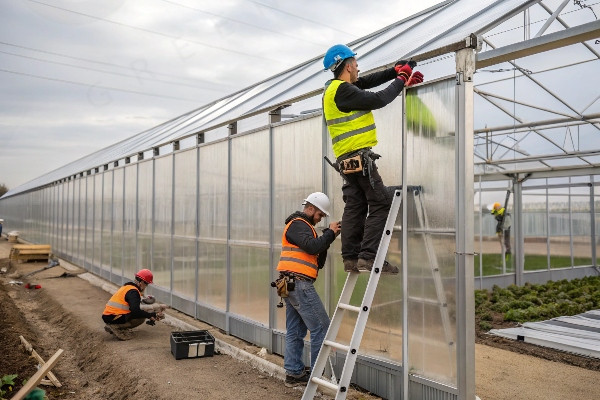
Superior light transmission and longevity justify glass selection for premium applications.
Light transmission represents glass’s primary advantage over all alternative materials. Premium horticultural glass achieves 92% light transmission with minimal light scattering. This crystal-clear optical quality maximizes photosynthetically active radiation reaching crop canopies.
The 7-8% light transmission advantage over polycarbonate translates into measurable yield improvements for light-sensitive crops. Tomatoes, peppers, and cut flowers show 5-12% higher production under glass compared to polycarbonate in identical growing conditions.
Spectral quality remains unchanged through glass compared to slight alterations in polycarbonate. This pure light spectrum benefits crops requiring specific light wavelengths for optimal development. Research facilities and premium flower production particularly value this optical precision.
Longevity creates compelling economic advantages despite higher initial costs. Quality glass installations last 25-30 years with minimal performance degradation. Light transmission remains constant throughout the service life while structural integrity stays intact with proper maintenance.
Maintenance requirements stay minimal with glass installations. Occasional cleaning maintains optimal light transmission while repairs involve simple glass replacement. No specialized knowledge or equipment is needed for routine maintenance tasks.
Surface hardness prevents scratching and weathering that affects other materials over time. Glass maintains its smooth surface indefinitely, preventing dirt accumulation and maintaining easy cleaning. This surface stability ensures consistent light transmission throughout the installation’s lifespan.
Thermal expansion characteristics remain predictable and manageable with proper installation techniques. Glass expands and contracts uniformly, preventing stress concentrations that cause premature failure. Professional installation ensures decades of trouble-free operation.
Chemical resistance makes glass ideal for applications involving pesticides, fertilizers, or cleaning agents. These substances cannot degrade glass surfaces or affect optical properties. This chemical stability proves critical in intensive production systems using aggressive chemical treatments.
| Glass Advantage | Performance Metric | Long-term Benefit | Best Application |
|---|---|---|---|
| Light Transmission | 92% vs 85% PC | 5-12% yield increase | Light-sensitive crops |
| Longevity | 25-30 year lifespan | Lower lifecycle cost | Premium operations |
| Optical Clarity | No light scattering | Consistent spectrum | Research facilities |
| Chemical Resistance | Inert surface | No degradation | Intensive production |
What are the disadvantages of polycarbonate? (Potentially shorter lifespan, slightly lower light transmission)?
Polycarbonate panels face limitations that affect long-term performance and crop production potential. Reduced light transmission impacts photosynthesis while shorter lifespan increases replacement costs. Understanding these limitations guides appropriate application selection.
Polycarbonate panels typically require replacement after 12-15 years due to UV degradation and yellowing that reduces light transmission by 10-15%, while surface scratching and dirt accumulation can decrease optical performance by 5-8% within 5-7 years without proper maintenance.
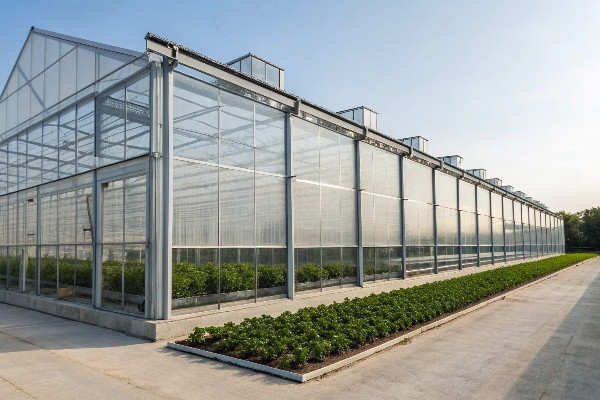
UV exposure and time gradually degrade polycarbonate optical and structural properties.
Light transmission reduction represents the most significant limitation of polycarbonate materials. Even premium panels achieve only 85-88% light transmission compared to 92% for glass. This 4-7% reduction in available light can impact crop yields, particularly for light-sensitive species.
The cellular structure that provides insulation benefits also creates light scattering that some crops find less beneficial than direct sunlight. While diffused light helps many applications, crops requiring intense direct light may perform better under glass covering.
UV degradation affects all polycarbonate materials over time despite protective coatings. Ultraviolet radiation gradually breaks down polymer chains, causing yellowing and brittleness. This degradation accelerates in high-UV environments like desert regions or high-altitude locations.
Surface scratching becomes problematic with polycarbonate panels, especially during cleaning and maintenance activities. These scratches accumulate dirt and reduce light transmission progressively. Unlike glass, scratched polycarbonate cannot be polished back to original clarity.
Thermal expansion coefficients differ from structural materials, creating stress points at connections. Improper installation or inadequate expansion joints can cause panel warping or cracking. This requires more careful installation techniques compared to glass systems.
Dirt and algae accumulation occurs more readily on polycarbonate surfaces due to slight surface roughness. The cellular structure can trap contaminants that prove difficult to remove completely. This requires more frequent cleaning to maintain optimal light transmission.
Chemical sensitivity affects certain polycarbonate formulations when exposed to aggressive cleaning agents or pesticides. Some chemicals can cause stress cracking or surface clouding that permanently reduces optical performance. This limits cleaning product choices and application methods.
Replacement frequency increases lifecycle costs despite lower initial investment. Most polycarbonate installations require panel replacement every 12-15 years compared to 25+ years for glass. This replacement cycle must be factored into long-term economic calculations.
| Polycarbonate Disadvantage | Impact Severity | Timeline | Mitigation Strategy |
|---|---|---|---|
| Lower Light Transmission | 4-7% reduction | Immediate | Accept or choose glass |
| UV Degradation | Yellowing/brittleness | 8-12 years | UV-resistant coatings |
| Surface Scratching | Progressive clarity loss | 3-5 years | Careful maintenance |
| Shorter Lifespan | Replacement needed | 12-15 years | Budget for replacement |
What are the disadvantages of glass? (Heavy, fragile, high installation cost)?
Glass installations face significant challenges that increase costs and complexity while creating ongoing vulnerability to damage. Heavy weight requires expensive structural support while fragility creates safety concerns and replacement costs that affect long-term economics.
Glass installations require 40-60% heavier structural frameworks costing $15-25 more per square meter, while breakage replacement averages $8-12 per square meter annually in typical commercial operations, making total ownership costs 25-35% higher than polycarbonate systems.
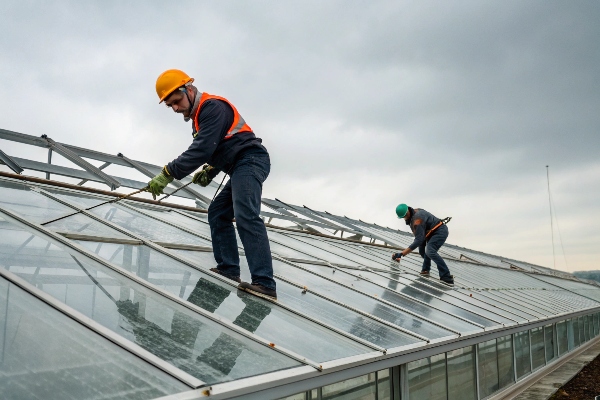
Heavy weight and fragility create significant installation and operational challenges.
Structural weight requirements dramatically increase construction costs for glass installations. Single-pane glass weighs 12-15 kg per square meter compared to 2.5 kg for polycarbonate. This weight difference requires heavier framework materials and more substantial foundations.
The structural framework for glass greenhouses costs 40-60% more than equivalent polycarbonate structures. Steel sections must be larger and connections stronger to support the additional weight. Foundation requirements also increase to handle higher dead loads.
Installation complexity rises significantly with glass materials. Large glass panels require specialized handling equipment and experienced installation crews. Crane rental becomes necessary for most commercial installations, adding $5,000-15,000 to project costs.
Safety concerns affect both installation and operation phases. Workers face injury risks from glass breakage during installation. Overhead glass panels create ongoing safety hazards if structural failure occurs. Insurance costs often increase for glass-covered facilities.
Breakage vulnerability represents the most serious operational disadvantage of glass installations. Hail, wind-blown debris, structural settlement, or thermal stress can shatter panels without warning. Replacement costs range from $25-50 per square meter depending on glass type and accessibility.
Emergency repairs become critical when glass breakage occurs during growing seasons. Crops can suffer severe damage from weather exposure while waiting for glass replacement. Emergency covering with plastic film provides temporary protection but affects growing conditions.
Thermal stress cracking occurs when temperature differentials create expansion mismatches. This problem increases in climates with large day-night temperature swings or when heating systems create hot spots. Proper installation techniques reduce but cannot eliminate this risk.
Transportation costs increase due to glass weight and fragility. Special packaging and handling requirements add 20-30% to shipping costs compared to polycarbonate. Breakage during shipping creates additional replacement and delay costs.
Maintenance access becomes more dangerous with glass installations. Workers must exercise extreme caution when accessing roof areas for cleaning or repairs. This increases maintenance time and labor costs while creating liability concerns.
| Glass Disadvantage | Cost Impact | Risk Level | Management Strategy |
|---|---|---|---|
| Heavy Weight | 40-60% higher structure | Medium | Engineer properly |
| Installation Complexity | $10-20/m² premium | High | Professional installation |
| Breakage Vulnerability | $8-12/m² annually | High | Insurance coverage |
| Safety Concerns | Higher insurance | High | Safety protocols |
Conclusion
Material selection depends entirely on specific application requirements, with polycarbonate offering superior cost-effectiveness and durability for most commercial applications, while glass provides optimal performance for premium crops requiring maximum light transmission and longevity.
